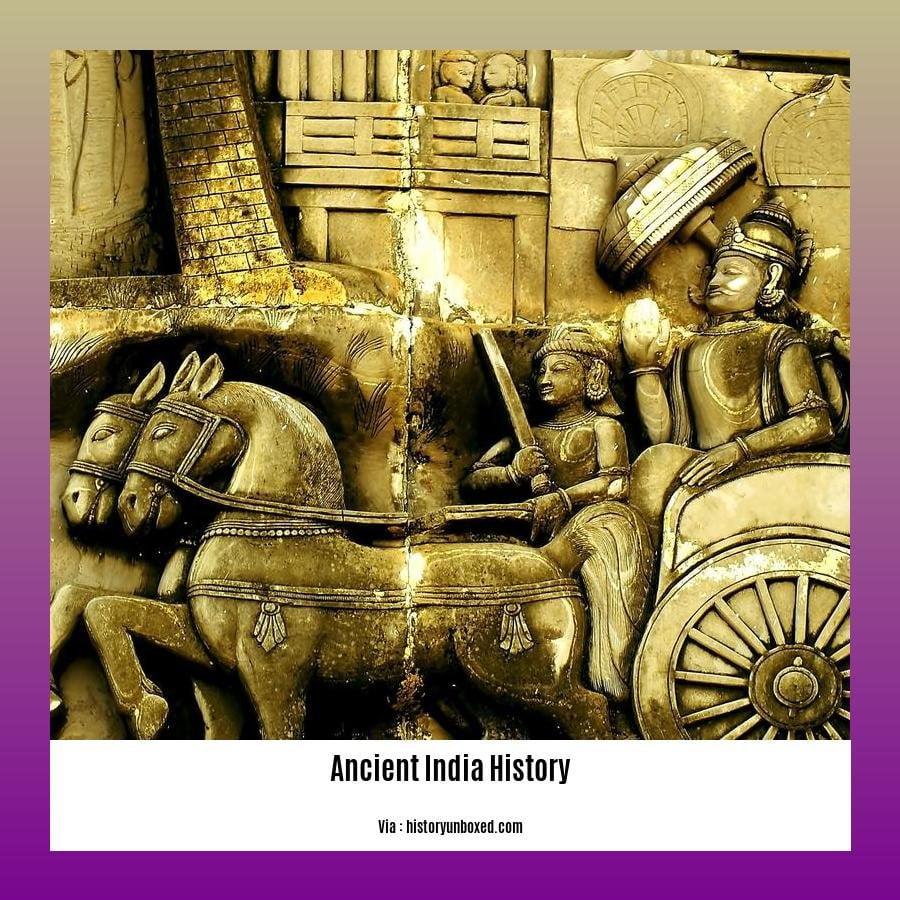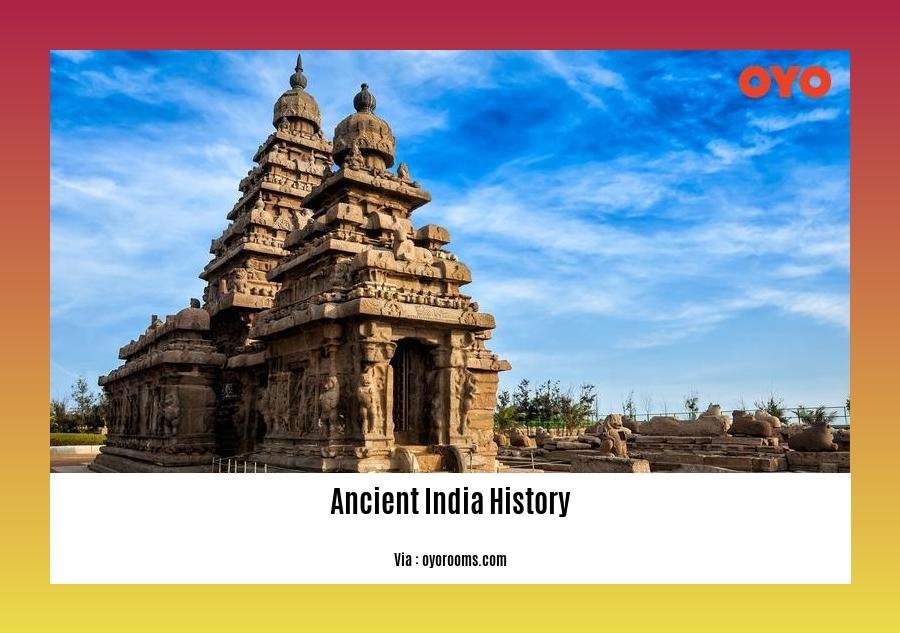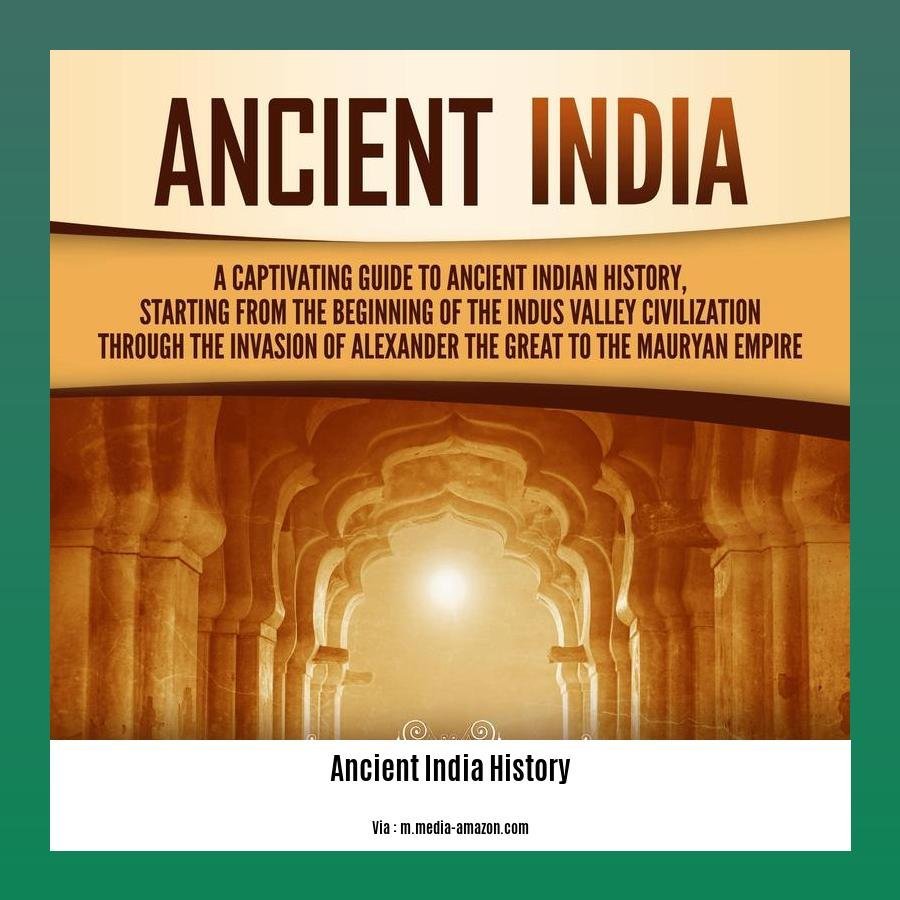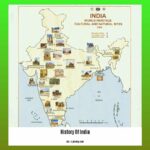Embark on a captivating journey through the annals of [Ancient India History: A Comprehensive Guide to an Enigmatic Civilization]. Delve into the enigmatic world of ancient India, where the Indus Valley Civilization thrived, Vedic hymns resonated, and empires rose and fell. As we explore the intricate tapestry of this ancient land, we will unravel the mysteries of its social, political, cultural, and religious landscapes. Prepare to be captivated by the enduring legacy of ancient India, a civilization that continues to inspire and intrigue us today.
Key Takeaways:
- Ancient India’s history spans from prehistoric times to 500 CE.
- Key periods include the Indus Valley Civilization, Vedic period, and Gupta Empire.
- The Indus Valley Civilization was an urban and literate society.
- Indo-Aryan tribes migrated into Punjab during the Vedic period.
- The Gupta Empire was the last great dynasty of ancient India.
Ancient India History

Dawn of Civilization:
- Indus Valley Civilization: Flourished around 2500 BCE. Advanced urban society with sophisticated cities like Harappa and Mohenjo-daro, featuring grid-planned streets, indoor plumbing, and a written script.
Vedic Age:
- Began around 1500 BCE with the arrival of Aryan tribes.
- Composition of the Vedas, sacred texts that shaped ancient Indian religion, philosophy, and society.
- Birth of Hinduism, with its beliefs in reincarnation, karma, and multiple gods.
Mahajanapadas:
- Period from 6th to 4th centuries BCE marked by the rise of independent kingdoms.
- Emergence of Buddhism and Jainism, two major Indian religions that promoted non-violence and spiritual liberation.
Mauryan Empire:
- Founded by Chandragupta Maurya in 322 BCE. United most of ancient India history under one rule.
- Asoka the Great, a renowned emperor who embraced Buddhism and promoted peace and social welfare.
Gupta Empire:
- Lasted from 4th to 6th centuries CE. Considered the “Golden Age” of ancient India history.
- Achievements in art, architecture, literature, and science, including the invention of the zero.
- Nalanda University, a renowned center of learning that attracted scholars from across Asia.
Medieval Period:
- Period of cultural blending and assimilation of new influences.
- Rise and fall of various empires, including the Delhi Sultanate and the Mughal Empire.
- Bhakti movement, a devotional religious revival that emphasized love and devotion to a personal god.
Legacy of Ancient India:
- Enduring impact on world civilization, contributing to mathematics, astronomy, and medicine.
- Rich heritage in art, architecture, and religious traditions that continue to influence modern India.
- A testament to human ingenuity, cultural diversity, and the interconnectedness of history.
Explore the rich tapestry of India through the history of India and discover the fascinating milestones that shaped its past. Get a comprehensive overview of the Indian history timeline, and delve into the vibrant and diverse Indian culture history.
Unveiling Mahajanapadas and the Treasures of Ancient India
Mahajanapadas: The Seeds of Ancient India
During the 6th century BCE, the political landscape of ancient India underwent a significant transformation with the emergence of powerful and influential kingdoms known as Mahajanapadas. These 16 kingdoms replaced the smaller states and tribes that had previously dominated the region, marking a transition from semi-nomadic societies to structured societies with well-defined boundaries, trade routes, and governmental systems. Located in northern and eastern India, these kingdoms signaled the beginning of the Iron Age in the region.
Key Takeaways:
- Mahajanapadas emerged from urban centers, agriculture, and iron technology.
- They were located in northern and eastern India.
- They represented a shift from semi-nomadic tribes to structured societies.
- These kingdoms were the forerunners of larger empires that would later shape Indian history.
Citation:
- “16 Mahajanapadas Of Ancient India – Origin, Types, Facts & More” by Testbook:
Mauryan Empire

Unveiling the Legacy of Ancient India’s Unifying Force
Settle into the pages of history, and let’s journey to the Mauryan Empire, a colossal empire that reshaped the map of ancient India, leaving an indelible mark on its legacy.
The Mauryan Empire emerged in 322 BCE under the reign of Chandragupta Maurya, a visionary ruler who unified a large portion of the Indian subcontinent. Its capital, Pataliputra (present-day Patna), became a hub of power, culture, and commerce.
The empire’s glory reached its zenith under the reign of Asoka the Great (268-232 BCE), a devout Buddhist who embraced non-violence and compassion. During his reign, the Mauryan Empire became a beacon of peace, and Buddhism spread throughout the subcontinent.
The Mauryan Empire left a lasting legacy:
- Centralized Administration: It established a highly organized central government, standardizing laws, weights, and measures.
- Territorial Expansion: The empire’s conquests expanded India’s borders, uniting diverse regions under a single rule.
- Cultural Exchange: The Mauryan Empire facilitated cultural exchange between regions, blending local traditions and fostering a sense of Indian identity.
- Buddhism’s Growth: Asoka’s patronage of Buddhism led to its widespread propagation, shaping Indian society and thought for centuries.
Key Takeaways:
- The Mauryan Empire unified most of the Indian subcontinent under a single rule.
- Chandragupta Maurya founded the empire in 322 BCE, while Asoka the Great expanded its reach and influence.
- The empire was known for its centralized administration, territorial expansion, and cultural exchange.
- Asoka’s embrace of Buddhism significantly influenced Indian society and religion.
Source:
- Britannica:
The Gupta Empire
Emerging in the 4th century CE, the Gupta Empire marked a golden age in ancient India, renowned for its flourishing arts, advancements in science, and religious and philosophical contributions.
From its initial establishment under Chandragupta I to its pinnacle under Chandragupta II, the empire’s reign was characterized by stability, prosperity, and cultural achievements.
Achievements of the Gupta Empire:
Arts and Architecture: The Gupta period witnessed a resurgence in art and architecture, exemplified by the construction of magnificent temples, sculptures, and paintings.
Science and Mathematics: Indian scholars during this time made significant strides in astronomy, mathematics, and medicine. Aryabhata’s groundbreaking work on the heliocentric model of the solar system was a notable achievement.
Literature and Philosophy: The Gupta era saw the flourishing of Sanskrit literature, including the composition of epics like the Ramayana and Mahabharata. The empire also fostered renowned philosophers like Kalidasa and Vasubandhu.
Education and Scholarship: The establishment of Nalanda University, a renowned center of learning, attracted scholars and students from across the globe.
Decline of the Gupta Empire:
Despite its illustrious achievements, the Gupta Empire began to decline in the 6th century CE. Factors such as invasions from neighboring kingdoms, internal conflicts, and economic issues contributed to its eventual fall.
Key Takeaways:
- Prosperity and Stability: The Gupta Empire ushered in a period of prosperity, stability, and cultural flourishing.
- Artistic Achievements: The empire is renowned for its exquisite arts and architecture, including temples, sculptures, and paintings.
- Scientific Advancements: Indian scholars made significant contributions to science and mathematics, particularly in astronomy and the heliocentric model.
- Literary and Philosophical Heritage: The Gupta period saw the flourishing of Sanskrit literature and renowned philosophers like Kalidasa and Vasubandhu.
- Educational Center: Nalanda University emerged as a global center of learning, attracting scholars from diverse backgrounds.
- Decline: The Gupta Empire faced challenges in the 6th century CE due to invasions, internal conflicts, and economic issues.
Source:
-“Gupta Empire.” Wikipedia, Wikimedia Foundation, 13 Feb. 2023. Web. 15 Feb. 2023.
FAQ
Q1: What are the key phases of ancient Indian history?
A1: Ancient India’s history encompasses the Indus Valley Civilization, the Vedic period, and the rise and fall of empires like the Gupta Empire.
Q2: What was the significance of the Indus Valley Civilization?
A2: The Indus Valley Civilization, dating back to 3300 BCE, was a highly advanced urban culture known for its literacy, sophisticated city planning, and extensive trade networks.
Q3: How did the Mahajanapadas contribute to ancient Indian history?
A3: The Mahajanapadas were powerful kingdoms that emerged around the 6th century BCE, transitioning from semi-nomadic tribes to a more structured society and marking the beginning of the Iron Age.
Q4: What are the notable achievements of the Mauryan Empire?
A4: The Mauryan Empire, founded by Chandragupta Maurya in 322 BCE, was the first empire to unify most of the Indian subcontinent and was known for its administrative efficiency, military prowess, and cultural achievements.
Q5: Why is the Gupta Empire considered a “Golden Age” of India?
A5: The Gupta Empire, from the 4th to 6th centuries CE, witnessed remarkable advancements in arts, architecture, sciences, religion, and philosophy, earning it the moniker “Golden Age of India.”
- Sept 31 Myth: Unveiling Calendar Secrets - March 18, 2025
- How Long & Till December 18, 2025: Accurate Countdown Guide - March 18, 2025
- Discover Japanese Artists: A Complete History - March 18, 2025
















